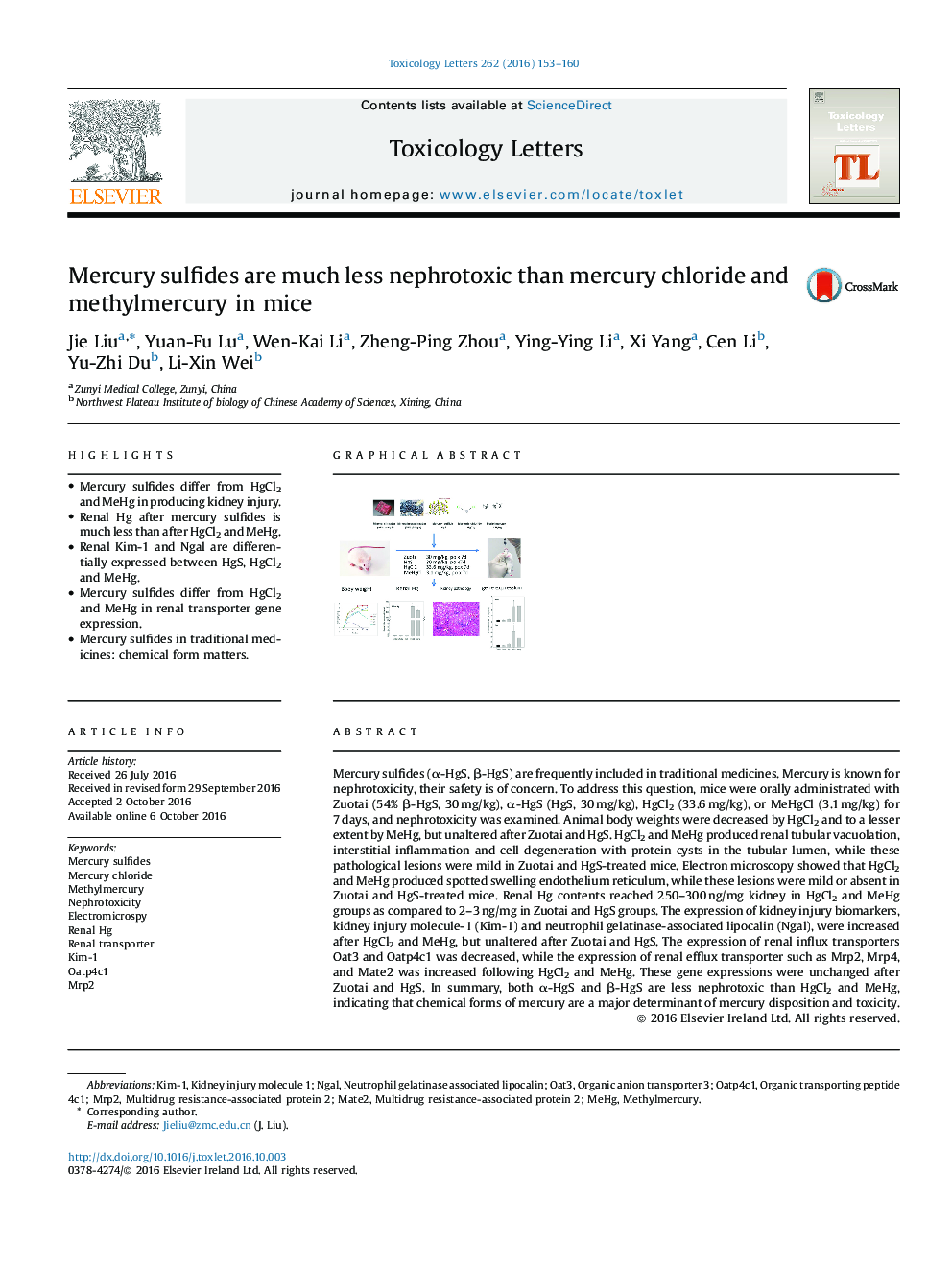| کد مقاله | کد نشریه | سال انتشار | مقاله انگلیسی | نسخه تمام متن |
|---|---|---|---|---|
| 5562317 | 1562611 | 2016 | 8 صفحه PDF | دانلود رایگان |
• Mercury sulfides differ from HgCl2 and MeHg in producing kidney injury.
• Renal Hg after mercury sulfides is much less than after HgCl2 and MeHg.
• Renal Kim-1 and Ngal are differentially expressed between HgS, HgCl2 and MeHg.
• Mercury sulfides differ from HgCl2 and MeHg in renal transporter gene expression.
• Mercury sulfides in traditional medicines: chemical form matters.
Mercury sulfides (α-HgS, β-HgS) are frequently included in traditional medicines. Mercury is known for nephrotoxicity, their safety is of concern. To address this question, mice were orally administrated with Zuotai (54% β-HgS, 30 mg/kg), α-HgS (HgS, 30 mg/kg), HgCl2 (33.6 mg/kg), or MeHgCl (3.1 mg/kg) for 7 days, and nephrotoxicity was examined. Animal body weights were decreased by HgCl2 and to a lesser extent by MeHg, but unaltered after Zuotai and HgS. HgCl2 and MeHg produced renal tubular vacuolation, interstitial inflammation and cell degeneration with protein cysts in the tubular lumen, while these pathological lesions were mild in Zuotai and HgS-treated mice. Electron microscopy showed that HgCl2 and MeHg produced spotted swelling endothelium reticulum, while these lesions were mild or absent in Zuotai and HgS-treated mice. Renal Hg contents reached 250–300 ng/mg kidney in HgCl2 and MeHg groups as compared to 2–3 ng/mg in Zuotai and HgS groups. The expression of kidney injury biomarkers, kidney injury molecule-1 (Kim-1) and neutrophil gelatinase-associated lipocalin (Ngal), were increased after HgCl2 and MeHg, but unaltered after Zuotai and HgS. The expression of renal influx transporters Oat3 and Oatp4c1 was decreased, while the expression of renal efflux transporter such as Mrp2, Mrp4, and Mate2 was increased following HgCl2 and MeHg. These gene expressions were unchanged after Zuotai and HgS. In summary, both α-HgS and β-HgS are less nephrotoxic than HgCl2 and MeHg, indicating that chemical forms of mercury are a major determinant of mercury disposition and toxicity.
Figure optionsDownload high-quality image (149 K)Download as PowerPoint slide
Journal: Toxicology Letters - Volume 262, 16 November 2016, Pages 153–160
